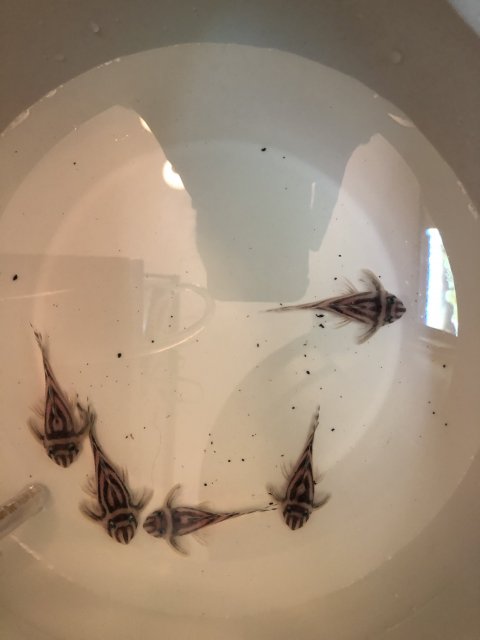Flow rate in zebra tanks is over rated. I know a pleco breeder who is #4 on the Planetcatfish.com BreederBoard. He uses air powered Poret foam cubes in his pleco breeding tanks. The more important consideration is that zebras like it warm. When one has to encrourage them to spawn byt doing a fry/rainy season, the water temp. should top out in the low 90s F. These temp. are reached in the Big bend of the Xingu, their only habitat in the wild.
The warmer water gets, the less oxygen it holds. For zebras well oxygentated water is more important than flow. However, that doesn't mean no flow either. My breeding tanks has 2 filters and one powerhead. There is an AquaClear 150 gph that hang on the right rear. There is a H.O.T. magnum using the micron cartridge whic I custom plumbed. That hangs on the left rear. It has a spraybar output which runs across the top right end of the tank and sends water across the surface. The intak runs into a hose which runs along the bottom rear of the tank and when it reaches the right end has an elbow which hooks into a prefilter sponged intake that runs arcross the bottom right end of the tank.
Finally the is a small powerhad which is also prefiltered and which is set on the left and glass at the front of the tank. I pushes a flow down the front glass. All the caves in the tank are lined up across the bottom of the tank facing the front glass, The powerhead creates flow across the cave entrance.
While strong flow may be appealing, it does have some drawbacks. Most notable is what it does to food and to waste. If the food gets blown into places the fish cannot get at it, it is goinh to rot there. Similarly, current will blow waste around. Finding and removing it can be a problem. Also, if one uses a sand substrate, that too can be hard to keep in place with strong current. I work with a number of the B&W Hypancistrus. Some of my tanks are bare bottom and some have sand. It is easier to spot debris on sand, but it is easier to vacuum bare glass. My zebra tank is bare bottom. I am a horrid photographer but this might help. Most of my spawns took place in the slate caves on either side of the wood at the right end.

The plants were removed eventually. Back then a new tank got plants to help insure it was fish safe re ammonia.
One thing that is important to understand. There is almost no one way to do anything in this hobby. Pretty much the only universals I come up with are a container, water and food. What works for me in terms of set-up may not be right for another and for sure not everyone. I set up my tanks for the comfort of the fish. When I have to catch fish, I have to remove everything from the tank to do so. Other folks have set-ups that are more keeper friendly. A bigger tank, big wood and caves for example. A lot of the success one achieves in this hobby is in figuring out what things work best for them. I work with my plecos in groups, but as one of the experts who helped me was always willing to remind me "it only takes a pair to spawn."
When you get your group assembled, we can discuss feeding. Imo, what and howyou feed is almost the most important part of spawning fish. This presumes there are in a proper sized tank with the right parameter water and the propper aquascape. Those things are easy, food is less simple. For spawning fish the best food is live. But I drew the line there. I tend to feed about 40-45% each frozen and Repashy and then about 10-15% commercial sinking sticks from kensfish.com. Feeding mostly commercial flakes etc. will not yield great results when it comes to spawning fish. Diet matters.
Really great info...I too am interested in breeding Zebras and have 5. Thx



